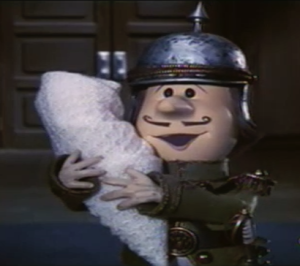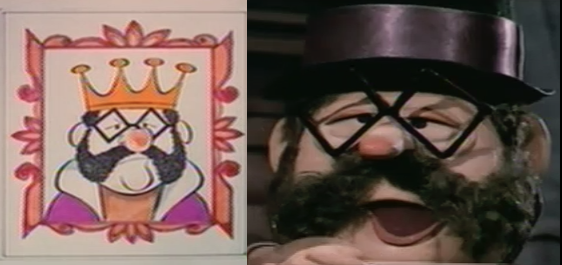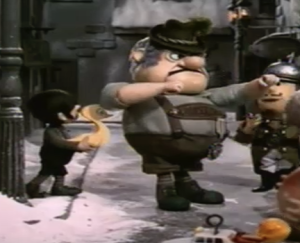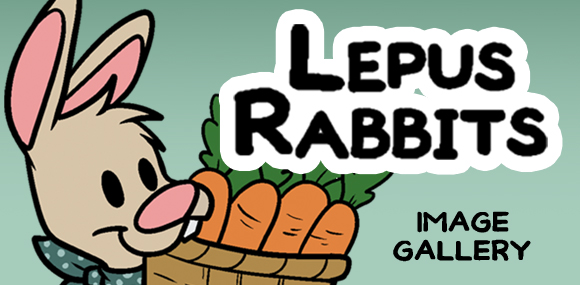Christmas specials are strange. These days, you can’t find a show that’s more than a few years old without ordering it or streaming it. Yet at Christmas, TV networks frequently run cartoons and stop-motion holiday shows from 40 or 50 years ago. The nostalgia can be fun. But let’s be honest, the writing isn’t always as careful as what modern audiences are used to.
Every few Christmases, I hear one of my one of my uncles pointing out some of the strange moments in Rankin/Bass’s 1970 holiday classic, Santa Claus is Comin’ to Town. You don’t have to pull the veil back very far to find some real oddities it that one.
In fact, I’ve decided to write some of those oddities down. I’ve even written a recap of the story that highlights the top ten most glaring oddities. I don’t know if anyone has done a nostalgic review of Santa Claus is Comin’ to Town yet. But I refuse to look it up because I really want to do this.
This one’s for you, Uncle Bob.
The Santa Claus is Comin’ to Town Recap with List of Top Ten Oddities:
Santa Claus is Comin’ to Town opens with a little red mail truck driving through a snowy forest. The truck stalls so the charming mailman decides to pass the time by reading all the letters to Santa. Wait, what?
Oddity #1: The Mailman Reads Everyone’s Letters
Aren’t there laws to protect us from such a breach of privacy? The mailman claims to have some kind of arrangement with Santa where he helps answer children’s questions so Santa can focus on toy requests. Still, it seems a little odd that he didn’t read any letters before he drove them all into the empty forest.
The mailman of dubious ethics tells us the history of Santa. Our story unfolds in the little village of Sombertown, a place in the far north that embodies every European stereotype, yet most residents speak with perfect American accents. In this town, baby Santa was abandoned on the mayor’s doorstep. Having no time for children, Mayor Burgermeister orders his lackey to take the baby to the “Orphan Asylum.” For some reason, the “Orphan Asylum” is located outside of town like some kind of quarantine hospital, so the lackey puts the baby on a sled and pulls him across the snowy field. But the sled is then swept away by a terrible blizzard, which brings us to the next oddity.
Oddity #2: A Man Abandoned a Baby in a Blizzard.
Of course, the cute forest animals rescue the baby. But, we are so invested in the baby’s adventure, that we might overlook the fact that a man believes that he left a baby in the wilderness to die of exposure. And he doesn’t seem to be bothered by this either. Sure, he makes a valiant effort to rescue the baby, but when he fails, he just goes back to town and continues his life as a comic-relief villain. That man is a stone-cold psychopath.
Instead of dying of exposure, the little baby is brought to an elves’ cottage on the far side of the mountain. Baby Santa is adopted by Tante Kringle, the Elf Queen. The elves find it necessary to give her the title “Queen,” even though there are only six of them living there.
Santa is given the adopted name “Kris Kringle.” As he grows, the elves teach him how to make toys. They explain that they were once the King’s personal toy makers. Tante even has a book full of pictures of the king. He is very distinctive looking.
Oddity #3: What About the King?
Apparently, this land was once ruled by a benevolent and toy-loving king. But now, the only government we see is the power crazed Mayor. How did this happen? Was there a coup?
Meanwhile, back in Sombertown, Mayor Burgermeister is injured by a toy. Logically, he places a ban on all toys, which sets up the main conflict of the story.
Take a good look at the doctor who treats the mayor’s injury. He is clearly the king from Tanta’s book! What happened here? Is the king in exile, posing as a working class citizen?
Santa reaches adulthood and decides to start giving toys away to the children of Sombertown. He soon discovers that toys are illegal, but decides that he knows better than the law and proceeds with his plans. Jessica, the school teacher, tries to explain the anti-toy rules, but Santa gives her a doll and she is instantly bribed into abandoning her beliefs by the gift of a small child’s plaything.
Santa and Jessica pass out the toys and sing the song “When you sit on my lap today, a kiss a toy is the price you pay.”
Oddity #4: Santa Wants to Trade Toys for Kisses
Parents, do not encourage your children to make out with strangers in exchange for presents. It’s super creepy. Add that to the fact that the man is technically an active criminal and there isn’t a red flag big enough or red enough for this situation.
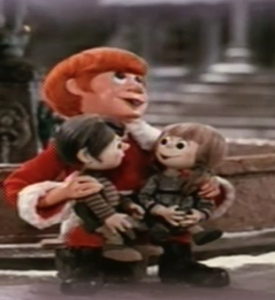
When Mayor Burgermeister discovers that the children are playing with toys again he has all the toys seized and declares Kris Kringle a criminal. This begins the “fun and games” portion of the show, where Santa has to keep coming up with new ways of delivering toys while circumventing the law. He only visits the town under cover of darkness, then carries toys down chimneys or hides them in stockings. Of course, the only reason why all this is necessary is because the children do nothing to hide their toys.
Oddity #5: The Children Shamelessly Flaunt their Illegal Toys
In the real world, children are sneaky. I mean this as a compliment. Most kids can find clever ways to keep secrets and hide contraband. However, the kids in this story constantly play with their toys in the open streets in plain sight of Mayor Burgermeister and his troops. It’s like they want to get caught.
So Santa must keep bringing new toys from the elf workshop to Sombertown. On one of his trips over the mountain, Santa encounters the Winter Warlock, a nasty hermit who uses magic to punish anyone who travels across his mountain. Santa makes peace with the warlock by giving the warlock a toy. That act of generosity convinces the warlock to become a good guy. Warlock even shares his magic with Santa, giving Santa the power to watch over children and “see who’s naughty or nice.”
Why doesn’t the Winter Warlock simply use his icy powers to simply freeze Santa’s enemies and bring a swift and vengeful end to this tale? Well, it seems that giving up his evil ways causes the warlock’s powers to ebb and his magic gradually becomes weaker as the story progresses.
Oddity #6: Warlock’s Magic is Linked to his Commitment to Evil
What kind of Faustian bargain did that man sign where his magic only works when he’s tormenting others? Is his magic derived from the dark arts?
Eventually Santa’s tricks run out. During one of his late-night toy deliveries the Burgermeister’s guards capture Santa. Jessica tries to warn Santa but the guards overtake her at the secret toy workshop. The elves and warlock are arrested and their workshop is burned to the ground while Jessica watches helplessly.
Oddity #7: Jessica’s Crimes Go Unpunished
Why wasn’t Jessica arrested too? She was clearly collaborating with the Santa Claus gang. Perhaps the town was too ashamed that one of their own would be involved in this caper, so they decided to turn a blind eye to her transgressions. But Jessica is then shunned and ostracized for her crimes, so she renounces her allegiance to Sombertown in a psychedelic dream sequence, which seems oddly out of place.
Thanks to the Mayor’s mercy or shortsightedness, Jessica is free to concoct an elaborate prison break. She uses a bit on the warlock’s dwindling magic to give reindeer the power of flight. The reindeer effortlessly fly over the prison walls, and carry their friends to freedom
In an effort to recapture Santa, Mayor Burgermeister hangs wanted posters of Kris Kringle all over the area. This is a terrible plan because the wanted posters all seem to be hung in the middle of nowhere. Plus, the wanted posters describe him as “the terrible toy maker,” a title that does little to make him seem threatening. Santa takes an equally poor counter measure and grows a beard to avoid looking like his wanted poster.
Oddity #8: Santa’s Beard is a Poor Disguise
Santa’s new neck beard is an awful disguise because it has yet to cover any of his face or defining features.
Now that they are homeless outlaws on the run from the law, Santa decides that this is the perfect time to ask Jessica to marry him. They can’t have a church wedding, as no towns can harbor criminals, so they stand under a Christmas tree and stare at the sky for a while. Wait, what?
Oddity #9: How is Santa Clause Married?
I don’t want to be too old fashioned, but how does that qualify as a wedding? There was no officiate or exchange of vows. Was it even a ceremony? A slow love song was played during the whole scene to distract the audience from how confusing it all is.
After his nuptials, Santa and his pals travel into the most inviting place on earth, the Arctic Circle. They build a home and workshop using stone and lumber from… somewhere. Then they start building toys from… some kind of resources. And the Burgermeister just disappeared… somehow.
Oddity #10: The Writers Have Clearly Lost Interest in Finishing This Story.
After Santa reached the North Pole, the rest of his story is thrown together pretty hastily. All remaining plot points are explained mostly through voiceover narration and if you ask any young children who watched this show to explain what happened between the jailbreak and the final song, they will probably look at you and shrug.
The mailman narrator tells us that the Burgermeisters all died off and people gradually forgot about them and their silly laws. So, after a couple generations of misery, everything eventually worked itself out? Pretty strange. Maybe the deposed king returned to power.
Somehow, children from all over the world have learned of Santa and have figured out how to send him letters. At this point, all the letters are being delivered by birds, despite the fact that this entire story is told by Santa’s postman, plus I’m pretty sure birds can’t fly to the arctic. To accommodate for a couple million kids being added to his gift list, Santa decides to only deliver presents on Christmas and that wraps up the story.
How has this story remained a holiday staple for the last 55 years? Is it a fun story in spite of its oddities or do the oddities increase its kitsch value and add to the fun?
It’s a mystery.
Almost as big a mystery as whatever happened to that king.
Merry Christmas.
(All images in this blog entry are property of Rankin/Bass and Classic Media)















